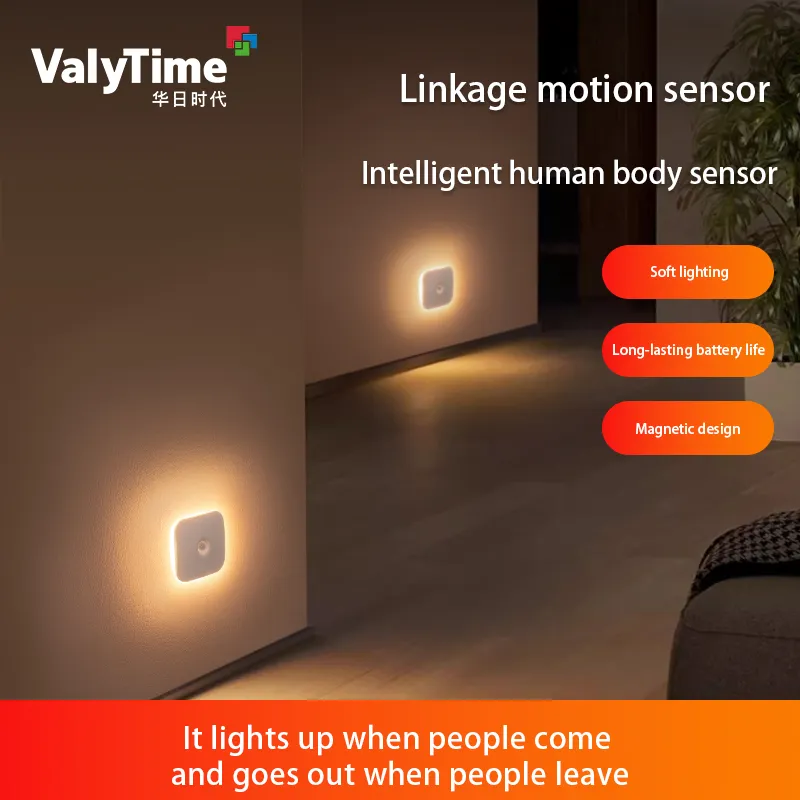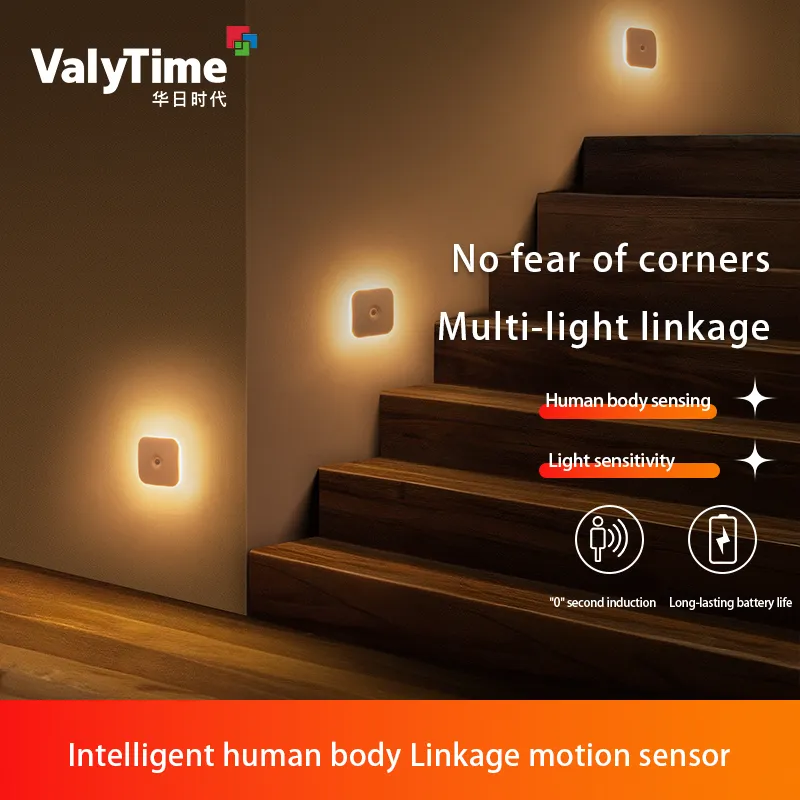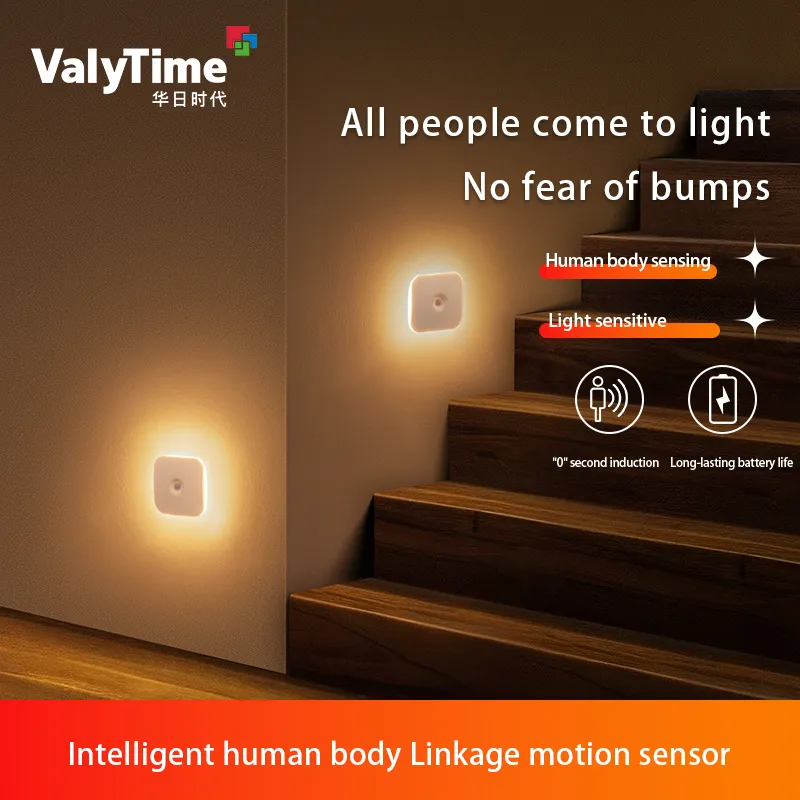Does a motion sensor hallway nightlight work at night?
In modern home lighting systems, motion sensor hallway nightlights have gradually become common smart lighting products. Besides hallways, people also install these nightlights in bedrooms, bathrooms, entryways, and even stairwells to automatically activate in the dark, avoiding inconvenience and potential risks during nighttime movement.
However, many consumers often have a question during use: Does a motion sensor hallway nightlight work at night?
This article will systematically analyze the core question of "Does a motion sensor hallway nightlight work at night?", from technical principles to application characteristics, from working modes to common misunderstandings, gradually answering user concerns.

Motion Sensor Hallway Nightlight: What is it and what is its function?
1. What is a Motion Sensor Hallway Nightlight?
A motion sensor hallway nightlight is a nighttime auxiliary lighting device that combines lighting functions with intelligent sensing technology. Its core feature is that the lamp has a built-in motion sensor, which can automatically trigger the light to turn on when it detects human or object movement and maintain illumination for a set time. If no new movement is detected within a set time period, the light will automatically turn off, achieving energy saving and convenience.
2. Difference from Ordinary Night Lights
Ordinary night lights are usually always on or operate on a timer, while the significant advantages of motion sensor hallway night lights are:
• No manual switching required: The light is automatically controlled by the sensor;
• Avoids energy waste: It only turns on when needed;
• More suitable for nighttime use: Reduces sleep disturbance caused by frequent switching.

Motion Sensor Hallway Night Light: How Does It Work?
1. The Principle of Motion Sensors
The "sensor" in motion sensor hallway night lights is mostly an infrared sensor (PIR sensor). Its working principle is to determine whether a person or object is passing by by detecting changes in infrared thermal radiation in the environment:
• When a human body enters the sensor's sensing range, the infrared radiation emitted by the human body is detected;
• The sensor converts this change into an electrical signal and transmits it to the control circuit;
• The control circuit then activates the light, turning on the night light.
Therefore, strictly speaking, the motion sensor itself operates 24/7, monitoring infrared signals day and night. Whether it triggers the light to illuminate depends on the light control circuitry and user settings.
2. The Role of the Light Control Circuit
To avoid frequent activation of the lights during periods of ample ambient light, motion sensor hallway night lights are typically equipped with light control elements (such as photoresistors):
• When the ambient brightness exceeds a set threshold, the light will not illuminate even if the sensor detects motion;
• The light will only illuminate when the ambient brightness is below the threshold.
Therefore, the motion sensor hallway night light illuminates at night not because the sensor only operates at night, but because the light control conditions are met.
Motion Sensor Hallway Night Light: How Does It Work at Night?
1. 24/7 Monitoring, Nighttime Illumination
The sensor portion of the motion sensor hallway night light operates 24/7, detecting motion even during the day. However, due to the light control circuitry, it will not trigger illumination during periods of ample daylight; the light will only illuminate at night or in low light conditions.
2. Automatic Sensing and Delayed Shutdown
When someone passes through the sensing range at night:
• The sensor triggers the light, turning on the night light;
• If there is continuous human activity for a short period, the light will remain on;
• When no activity is detected, the light automatically turns off after a preset delay (commonly 10 to 60 seconds).
This logic ensures that the motion sensor hallway night light only operates when necessary at night, meeting lighting requirements while effectively avoiding energy waste.
3. Adjustable Modes
Some motion sensor hallway night lights support multiple modes:
• Night Mode: Triggers illumination only when there is insufficient light at night;
• All-Weather Mode: Lights up regardless of day or night when motion is detected;
• Low-Light Mode: Maintains weak illumination at night, automatically increasing brightness when motion is detected.
In other words, the motion sensor operates 24/7, but the light only illuminates at night or when there is insufficient light. This is the core logic of the motion sensor hallway night light. Some products also allow users to select different modes according to their needs, such as always-on, dim standby, or timer mode, thus meeting diverse lighting needs at night.
Therefore, consumers can adjust the working mode of the motion sensor hallway night light according to their actual needs.

Motion sensor hallway night light: What are the advantages of working at night?
1. Convenient Lighting
At night, especially in bedrooms, hallways, and bathrooms, using a motion sensor hallway night light avoids the inconvenience of searching for a switch when getting up at night, improving the user experience.
2. High Safety
In dark environments at night, falls and collisions are more likely to occur. The motion sensor hallway night light automatically illuminates when the user moves, effectively improving safety while walking at night.
3. Energy Saving and Environmental Protection
Compared to always-on nightlights, motion sensor hallway nightlights only illuminate when needed, greatly reducing power consumption. This energy-saving advantage is even more apparent in areas where no one passes through for extended periods, such as hallways and staircases.
4. Does Not Disturb Sleep
Many users worry that always-on nightlights will affect their sleep quality. Motion sensor hallway nightlights avoid this problem—they turn off when there is no activity, maintaining a dark environment and promoting deep sleep.
Motion Sensor Hallway Nightlights: Common Misconceptions and Clarifications
Regarding the question, "Does a motion sensor hallway nightlight work at night?", users often have the following misconceptions:
1. Misconception: The motion sensor only works at night
In reality, the motion sensor itself senses motion all day; it's just that the light won't turn on during the day because the light control conditions aren't met.
2. Misconception: The nightlight is completely ineffective during the day
The correct explanation is: The nightlight can still sense motion during the day, but it won't turn on; it's in a working but not illuminating state.
3. Misconception: The nightlight only has a fixed mode
In fact, different models of motion sensor hallway nightlights support multiple adjustment modes, such as night mode, all-day mode, and low-light constant-on mode, which users can choose according to their needs.
Detailed Explanation of Motion Sensor Hallway Night Light Nighttime Operation Settings
1. Nighttime Dedicated Mode
Most motion sensor hallway night lights are factory-set to nighttime mode by default:
• When the light is bright enough, the light will not turn on even if someone passes by;
• In low light conditions, the light will turn on as soon as a person is detected.
2. All-Day Low-Light Mode
Some high-end motion sensor hallway night lights offer an all-day low-light mode:
• Remains off during the day;
• Enters a low-light constant-on state starting at dusk;
• Automatically increases brightness when motion is detected;
• Returns to low-light state after a period of time.
This mode balances ambient ambiance with practical lighting, making it especially suitable for bedrooms or hallways.
3. Manually Adjustable Mode
Some products allow users to manually select sensor sensitivity, light control threshold, and delay time for lighting via toggle switches, on/off switches, or an app to meet different usage scenarios.

Why doesn't the motion sensor hallway night light work at night?
Some users have reported that the night light did not turn on when they passed by at night. This may be due to the following reasons:
• Insufficient power: The battery is depleted or there is a poor power connection;
• Sensing angle issue: Sensors usually have a specific angle. If a user enters from a blind spot, the light may not be detected;
• Ambient light too strong: If the surrounding lights or moonlight are bright at night, exceeding the light control threshold, the night light will not turn on;
• Delay logic: Passing by shortly after the light has just been turned off may still be within the delay logic and not triggered.
Does the motion sensor hallway night light work at night?
System analysis can clearly answer:
1. The motion sensor hallway night light does work at night, but this is not because the sensor only activates at night. Rather, it's because the light control circuit determines that the ambient light is insufficient, thus allowing the sensor signal to turn on the light.
2. The motion sensor itself works 24/7, constantly monitoring the movement of people or objects. It's just that during the day, due to sufficient light, the light is not triggered.
3. Users can also set the motion sensor hallway night light to an all-day low-light mode, maintaining a dim light at night, increasing brightness when motion is detected, and then turning off or returning to daytime mode at dusk.
Therefore, the correct understanding is: the motion sensor hallway night light's sensor is constantly working, while the light only illuminates at night or in low light conditions.
Do you offer fast lead times for urgent wholesale orders?
Yes, our large-scale manufacturing enables us to handle urgent and high-volume orders efficiently. Standard LED lights can be produced and shipped within 3–4 weeks, while customized models may take slightly longer depending on complexity. We maintain material inventory for popular models to shorten production cycles. Buyers with ongoing needs can establish long-term supply plans to secure continuous stock.
